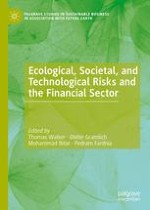2020 | OriginalPaper | Chapter
13. An Incentives-Based Mechanism for Corporate Cyber Governance Enforcement and Regulation
Authors : Shaen Corbet, Constantin Gurdgiev
Published in: Ecological, Societal, and Technological Risks and the Financial Sector
Publisher: Springer International Publishing
Activate our intelligent search to find suitable subject content or patents.
Select sections of text to find matching patents with Artificial Intelligence. powered by
Select sections of text to find additional relevant content using AI-assisted search. powered by
